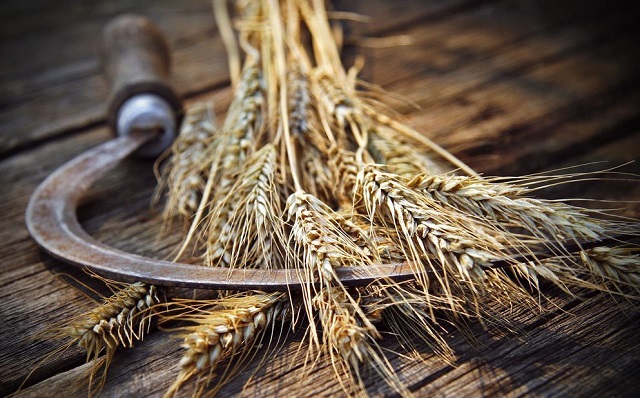
The Sunday News

Dumisani Nsingo, Senior Farming Reporter
COMMUNAL farmers at Valley Irrigation Scheme in Matobo District, Matabeleland South Province were forced to resort to using sickles for almost a month to harvest their winter wheat grown under Government’s Command Agriculture Programme due to unavailability of a combine harvester.
Farmers at the 200-hectare irrigation scheme located in Donkwe-Donkwe area were left with no choice but to use the rudimental and laborious way of harvesting the 62 hectares put under wheat to avoid the crop from being damaged by the imminent rains.
Valley Irrigation Scheme chairperson Mr Gibson Zulu said farmers have since the third week of last month been using sickles to harvest the wheat.
“Farmers at Block A that planted 12 hectares of wheat as individuals started harvesting their wheat using sickles on the third week of October in fear of having the crop destroyed by rains. We only got a combine harvester two weeks ago but it only managed to cover two hectares and developed a mechanical problem. We realised about 96 bags of 50 kilogrammes from it against the 300 bags that had been harvested by the farmers using the traditional method,” said Mr Zulu.
The irrigation scheme was only allocated another combine harvester yesterday after intervention from the Command Agriculture Programme authorities in Harare leading to the dispatching of the machinery from Insiza District.
“We finally got another combine harvester and we have been given two days to use it and thereafter it leaves to harvest about 70 hectares for outgrower farmers at Antelope that were facing the same predicament as us.
“We are, however, appealing to the authorities to expedite the allocation of combine harvesters because normally the rainy season should have started by now and this would have meant that we were going to lose the entire crop due to rain damage,” said Mr Zulu.
It is the first time the irrigation scheme has grown wheat under the Command Agriculture Programme, having cropped maize during the 2017/18 season and delivered 41 tonnes to the Grain Marketing Board under the scheme.
The irrigation scheme was established in 1997 and at its inception it had 201 members drawn from 10 villages of Ward 13 and 14.
To date it has 109 members after some of them opted out due to failure to fulfil part of the requirements expected of them.
In 2008 the irrigation started experiencing a host of challenges, among them obsolete equipment and high utility bills leading to it stopping operations in 2014.
However, intervention by the Government and Food Agriculture Organisation (FAO) and Pro Africa through the Small Holder Irrigation Support Programme saw it resuming production in 2017.
The irrigation was also allocated two centre pivot irrigation system equipments under Brazil’s More Food for Africa Programme.
The country secured a $98 million loan to buy irrigation equipment, tractors and implements through Brazil’s More Food for Africa programme. Delivery of the machinery started in May 2015.
Mr Zulu said the irrigation scheme, which has over the years dwelt mostly in the cropping of cereals as well as groundnuts, sugar beans, sunflower and was at one time contracted to grow paprika has managed to improve livelihoods of most villagers.
“There is no doubt that this irrigation scheme has managed to change the lives of many for the better. Most members have managed to enhance their wealth through buying livestock from the proceeds realised from this irrigation scheme and we have seen significant home improvements while of course most pay school fees for their children using part of the revenue we realise here. It has also assisted us to improve our household food security,” he said.
Mr Zulu, however, bemoaned the carrying capacity of the irrigation’s source of water, Valley Dam.
“The dam’s water levels are worrisome especially during these prolonged dry spells. Our dam is small and to add more woes to that it has a lower spill way which allows most of the water to be lost as runoff,” he said.
@DNsingo



